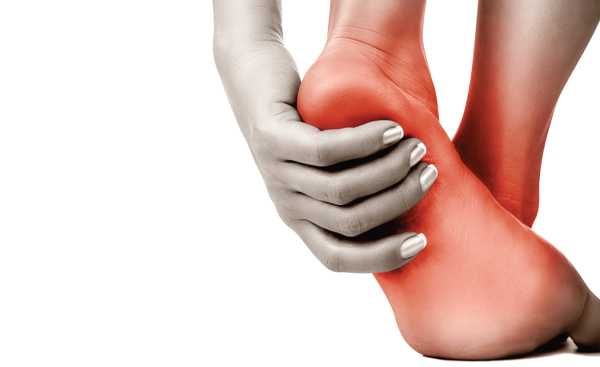OH! MY FEET ACHE!

Whereas our feet keep us on the move all day, few of us remember to give them some tender loving care they so much crave for. When you experience pains and aches on your feet, just know they are crying for attention. We give you tips on how to ease common foot problems.
Your whole body weight goes onto your feet when you walk or stand and because of this, anything causing pain or discomfort in your feet will feel amplified every time you take a step. Pain to your feet can be due to an imbalance in your gait, ill-fitting shoes, injury, or pressure points on your feet. These tips will help you to heal your feet by discovering the source of your pain and how to remedy it.
1. CRACKED HEELS Not only do they feel uncomfortable and look unsightly, left untreated, dry, cracked heels can end up as painful fissures that can bleed and even become infected. If the glands in your feet don’t produce much sweat, you may be more prone to dry heel skin. Healing tips: Once a week, after a shower or bath, use a pumice stone to gently remove hard skin. Then apply a moisturising foot cream to help keep skin supple. Use Vaseline petroleum jelly or any other rich moisturiser daily after a shower or bath. For additional softening of the skin, use Vaseline petroleum jelly at night on clean feet and wear socks to bed. Putting cushioning insoles in your shoes can help 2soften the impact on your heels.
2. HEEL PAIN
There are three types of heel pain – bursitis, plantar fasciitis and general heel pain. Bursitis is an irritation of a bursa (a fluid-filled sac between the Achilles’ tendon and heel bone), caused by mechanical problems such as over-pronation, an increase in physical activity or even ill fitting shoes. Plantar fasciitis – a common overuse injury – is a painful inflammation of the tissues attached to the heel bone, caused by stretching of the fibrous bands that support the arch of the foot. General heel pain can be caused by too much standing or walking, or running, for example in a marathon.
Healing tips: Use a heel cushion to absorb shock in the heel. Anti-inflammatory creams and ice packs can ease bursitis. For plantar fasciitis, it is best to visit a chiropodist (a specialist in feet problems). Do not ignore any heel pain that lasts more than a week. If self-treatment with over-the-counter remedies does not work, consult a specialist or a general practitioner.
3. CORNS
Usually caused by rubbing shoes and pressure on feet, corns are painful areas of hardened skin that form over bony areas, commonly the ball of the foot, toes or between the toes. When skin is exposed to a lot of pressure or friction, the protein keratin in the outer layer of skin, or epidermis, thickens to protect it. When this keratin forms small hard plugs – creating a corn – it presses into the skin, causing pain and swelling.
Healing tips: Don’t use over-the-counter corn plasters or paints, which dissolve the hard skin unless a doctor has recommend them. See a chiropodist to get the corn painlessly removed. Your doctor can recommend you to a chiropodist. To prevent a corn recurring, use a pumice stone to remove hard skin once a week after a bath or shower. Wear shoes with plenty of room for your toes, a low heel and a soft upper. Wear open shoes often to allow your feet to breathe. Moisturise your feet every time after a shower or bath to keep them soft and supple.
4. BUNIONS
Bony swellings at the base of the big toe, bunions form when your toe turns inward towards the second toe. This causes the first metatarsal forming a painful, bony lump on the side of the foot. Tight and badly fitting shoes are a common cause of bunions. But they can also be genetic or caused by arthritis.
Healing tips: Bunion pads from pharmacies may help prevent rubbing and painful pressure, while ice compresses can help reduce swelling. Orthotic insoles may help ease pain, while bunion splints help improve alignment. You can get these from a pharmacy. Always wear low-heeled, wide-fitting shoes. If your bunion is very painful, your doctor may suggest surgery to remove it. He will refer you to a specialist.
5. INJURY
Feet injuries can arise from knocks, cuts, walking barefoot, walking or running long distances, engaging in high impact sports activities such as tennis, or wearing ill-fitting shoes. They may result in broken and bleeding skin or internal injuries that cause swelling on the spot. Any injury can be painful and should be treated immediately. Left untreated, it could get infected or cause other complications that may immobilise you for a long time. Some injuries, such as those of the tendons of the toes can take a long time to heal and can be depressingly painful, and some may not even allow you to wear closed shoes.
Healing tips: If you have broken skin that is bleeding, clean it thoroughly with running water and dab with an antiseptic lotion or salty water. Establish what has caused the injury and if it is something rusty or in the open in a dirty place, or where there is faeces from dogs, cats or other animals, tetanus could enter your body through the wound. If you suspect a broken bone or tendon, see a doctor. If it is a minor injury, massage the area and apply a pain relieving cream. Also avoid wearing closed shoes until it heals.
Published in January 2015




